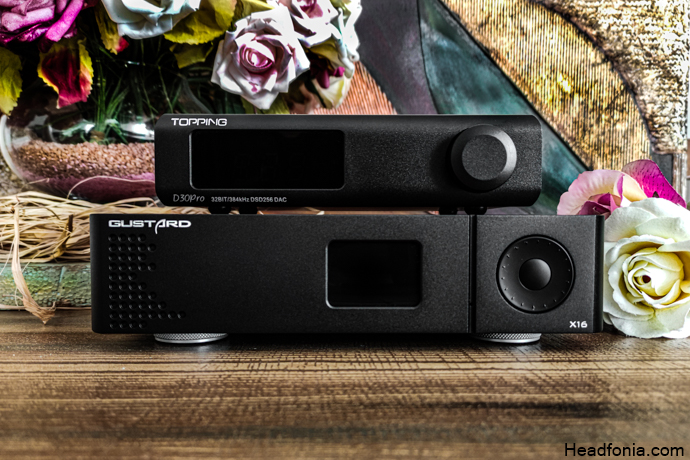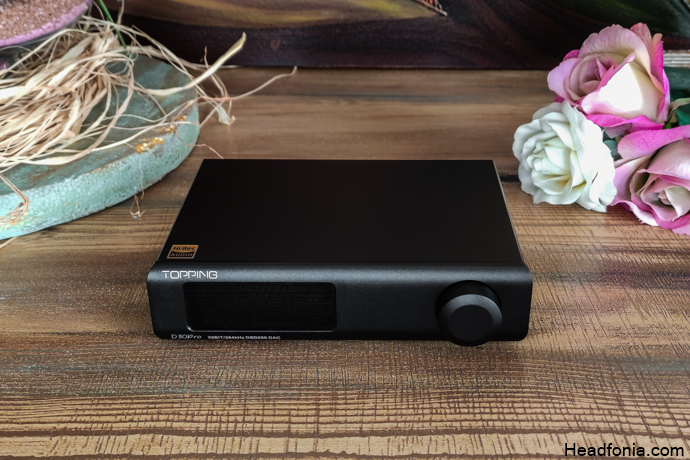In this review, we’re taking a look at the new $399 Topping D30 Pro DAC.
Disclaimer: Aoshida-Audio sent us the Topping D30 Pro for this review, free of charge. I only covered the customs fees & taxes. All thoughts and experiences with the product are naturally my own. You can find more about it HERE.
Topping
Topping Electronics & Technology, known as ‘TOPPING’, is based in Guangzhou, China, and was established in 2008. They build some of the best DACs and AMPs when it comes to the price-to-performance ratio. They have a dedicated R&D team of skilled engineers and audiophiles. Topping also states that they are heavily invested in the latest audio testing machinery such as the APx555 from Audio Precision. Of course, all of this means one thing for us consumers, better devices!
I have used many Topping products in the past, the oldest two I remember are the TP30 and the NX1. The year was 2013 I believe. I never had any problems with their products despite using 20+ of them throughout the years. We recently reviewed one of their newest DACs, the D70s and we awarded it with the Headfonia Recommendation. You can check that review here.
TOPPING D30 Pro DAC
Approximately 5 years have passed since the original D30 was launched. The D30 was a great DAC and loved by the audiophile community. Topping has released quite a few new products since then, and DACs have improved significantly, especially in the last two years. In my opinion, following this, Topping wanted to build a DAC that was both to challenge this year’s DACs and to honor the success of the D30. Let’s see together if the D30 Pro is a DAC worthy of continuing the success of the original D30.
Highlights & Technical Specifications
Configuration: x4 Cirrus Logic CS43198 DACs
Input: USB, Optical, Coaxial
Output: RCA / XLR
THD: RCA < 0.0001% @ 1kHz | XLR < 0.00009% @ 1kHz
Dynamic Range: RCA 127dB @ 1kHz | XLR 132dB @ 1kHz
Output Impedance: XLR 40Ω; RCA 20Ω
USB: PCM up to 32bit 384kHz Native DSD up to DSD256, DSD DoP up to DSD128
Coaxial & Optical: PCM up to 24bit 192kHz, DSD64 (DoP)
Voltage Output: RCA 2Vrms | XLR 4Vrms
Dimensions: 174 x 138 x 45mm
Weight: 870g

Accessories & Build Quality
The Topping D30 Pro comes in a plain white cardboard box. After opening the box, the first thing you see is the protective foam. This thick foam compartment provides sufficient safety for the device during transportation. The device and the accessories are located under that foam. The accessories follow the industry standards. You get a USB-A to USB-B cable, a remote, and a power cable along with the manual/warranty card.
The first thing I noticed was the size of the device. It is smaller than most of the DACs I reviewed on Headfonia. It is much smaller than the Topping D70s and it is also slightly smaller than the SMSL SU-9. It is not a heavy device either. The form-factor impressed me.
Let’s talk about the design and build quality. If you’ve been following my reviews here, you’d know that Topping will probably not let us down in this section and that’s exactly the case here. CNC milled aluminum case combined with the scratch-resistant matte black finish tells us that it is a device to last. Compared to the D70s, it has rounded edges and a smoother silhouette. It feels quite durable and well-made in hand. Topping chose to go with a rotary knob compared to the D70s and I am very glad that they did. It makes it quite easy to adjust the volume precisely compared to the button control. We also have a screen on the front and nothing else. The display is not very advanced compared to SMSL SU-9 and the color cannot be changed from orange. The screen shows information about the active input, sample rate, and mode. The rotary knob can be pressed on so navigation is possible, however, using a remote is a much easier option. On the back, we have inputs and outputs.
The D30 Pro unfortunately does not come with Bluetooth capability. You have USB, Optical and Coaxial inputs. As for the outputs, you have balanced XLR and unbalanced RCA. Everything feels solid, including the pressable volume knob. Topping once again nailed this category. Well done.
Technology Inside
Just like the original D30, the D30 Pro utilized Cirrus Logic DAC(s). Only this time, they went with not one, but 4 DACs! D30 Pro features x4 CS43198, configured in a balanced setup. It is a high-performance 32-bit DAC that is designed as a successor to the flagship CS4399. Topping also used a CPLD to improve signal stability and further reduce the jitter for a cleaner, better SNR. As for the filtering, they chose to use 8 independent LDOs. Unfortunately, I couldn’t find any information about the amplification stage and power supply. Topping has a very good R&D team and they tend to use high-quality components, high-performance audio analyzers to test and improve their designs so I wouldn’t worry about the lack of information. The measurements are excellent and Topping is not shy at all to share them around. You can even find the measurements in the operation manual. One other thing that they did is that Topping tried to eliminate the gap of performance between the XLR & RCA out. We’ll talk about that in the sound section but the voltage output difference is obviously still there. The XLR output is rated at 4 Vrms while the RCA can offer 2 Vrms max. Topping chose to use the XMOS XU-208 USB chip in the D30 Pro and I believe SMSL SU-9 uses the same chip. However, there is a difference between the two. The D30 Pro offers DSD decoding up to DSD256 whereas SU-9 offers up to DSD512.

Features
The Topping D30 Pro has all the essentials you need. I am emphasizing essentials because it lacks a few features that we see regularly nowadays. Let’s start with the positives. You have a preamp mode. You can hook it up to your active speakers and control them via this DAC while enjoying the better sound quality and eliminating the need for a dedicated preamp. That’s a plus and some of the DACs do not come with this feature. You also have a dedicated DAC mode, and you should be using this mode if you are planning to pair it with a headphone amplifier, such as the A30 Pro. Another great feature of the D30 Pro is a rather simple one. Auto standby. When the automatic standby option is on, if the current input is not connected or the input signal is invalid in the next minute, the device will automatically enter the standby state. It will reactivate itself with the activation of the signal. Many DACs come without this simple feature. Take the SMSL SU-9 for example. It does not have auto display off or auto-standby features.
Let’s talk about the menu and navigation. The device does not have a quickly accessible menu. However, via remote, you can change quite a few things. You can change the active filter, input & output, you can also adjust the display brightness. However, if you want to change the active mode from PRE to DAC for example, you have to shut down the device, hold the volume button down and simultaneously turn the device back on from the power switch on the back. That way you will reach the main menu where you can make changes to pretty much everything DAC offers. I found this to be a little lengthy.
As for the negatives, the D30 Pro does not offer Bluetooth capability. Many of the devices do that and I find that to be a little awkward. My best bet is that perhaps they wanted to keep the device small so that was a tough call to make for Topping. Another negative may be the lack of native MQA decoding capability. However, it is not a big deal for me as the device sounds wonderful with my FLACs & DSDs.
The DAC has 9 filter options and some of them have very subtle effects on sound and some of them have none. After an extended listening session, I found them just not worth trouble and I suggest you stick with the default filter.

The article continues on page 2. Click here or use the jumps below.









SHAWN
You’re right about the highs having a sharper attack than the D30Pro. So sharp in fact that I traded the SMSL SU9 in for the Topping D30Pro and was much happier. I cannot take that sharp ESS presentation. Wolfoson/Cirrus chips in the Topping were exactly what I was searching for: Smooth with class leading sound stage similar to R to R Dacs.